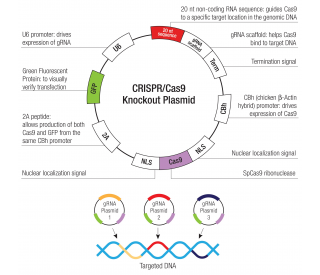Purity
>95%, by SDS-PAGE under reducing conditions and visualized by silver stain
Endotoxin Level
<0.01 EU per 1 μg of the protein by the LAL method.
Activity
Measured by its ability to enhance neurite outgrowth of E16-E18 rat embryonic cortical neurons.
Recombinant Human TAFA1/FAM19A1, immobilized at 6-24 μg/mL on a 96-well plate, is able to significantly enhance neurite outgrowth.
Source
E. coli-derived Ser26-Thr133
Accession #
N-terminal Sequence
AnalysisSer26
Predicted Molecular Mass
12.1 kDa
SDS-PAGE
12.4 kDa, under reducing conditions
5154-TA |
| |
Formulation Lyophilized from a 0.2 μm filtered solution in PBS. | ||
Reconstitution Reconstitute at 200 μg/mL in sterile PBS. | ||
Shipping The product is shipped at ambient temperature. Upon receipt, store it immediately at the temperature recommended below. | ||
Stability & Storage: Use a manual defrost freezer and avoid repeated freeze-thaw cycles.
|
Background: TAFA1/FAM19A1
TAFA1 (also FAM19A1) is a secreted, 13 kDa member of the FAM19/TAFA family of chemokine-like proteins (1). It is synthesized as a 133 amino acid (aa) precursor that contains a 19 aa signal sequence and a 114 aa mature chain (SwissProt # Q7Z5A9). Like other members of the FAM19/TAFA family, mature TAFA1 contains 10 regularly spaced cysteine residues that follow the pattern CX7CCX13CXCX14CX11CX4CX5CX10C, in which C represents a conserved cysteine residue and X represents a noncysteine amino acid (1). Human TAFA1 is 100% aa identical to mouse TAFA1. TAFA1 is expressed exclusively in the brain, with highest expression in the frontal cortex, temporal cortex, occipital cortex, parietal cortex and medulla, and low levels in the basal ganglion, thalamus, and cerebellum (1). The biological functions of TAFA family members remain to be determined, but there are a few tentative hypotheses. First, TAFAs may modulate immune responses in the CNS by functioning as brain-specific chemokines, and may act with other chemokines to optimize the recruitment and activity of immune cells in the CNS (1). Second, TAFAs may represent a novel class of neurokines that act as regulators of immune nervous cells (1 - 2). And third, TAFAs may control axonal sprouting following brain injury (1).
References:
Tang, Y.T. et al. (2004) Genomics 83:727.
Benveniste, E. (1998) Cytokine Growth Factor Rev. 9:259.
Long Name:
Family with Sequence Similarity 19, Member A1
Entrez Gene IDs:
407738 (Human); 320265 (Mouse); 500266 (Rat)
Alternate Names:
Chemokine-like protein TAFA-1; FAM19A1; family with sequence similarity 19 (chemokine (C-C motif)-like), member A1; TAFA1; TAFA-1










